Since the inception of sport diving, Egypt has been a dream destination for all divers. Not only does it boast some of the world’s most beautiful reefs and diverse ecosystems, it is also geographically perfect for those living in Europe and is substantially cheaper than its counterparts (such as the Maldives, for example). However, for the first time visitor, it is easy to be overwhelmed by the amount of recommended dive sites and cities to visit during your stay (which is evident of the sheer scale of beauty). Sharm El Sheikh or Marsa Alam? Day boats or liveaboards? Wrecks or reefs? Hopefully, with the help of our in depth travel and dive guide the process of choosing where to go will be made one step simpler.
Cities
1. Dahab
Dahab is a small town located on the upper east coast of the Sinai Peninsula, on the Gulf of Aqaba. Shore diving is the predominant type of diving there, with famous sites such as the Blue Hole and the Canyon on offer. Boats tend to stay within Dahab, and so for those looking to travel to the ‘northern sites’ and others more south, it is best to go to Sharm El Sheikh instead. However, for those wanting to do technical diving, Dahab is arguably the best place in the Red Sea to do so, with an abundance of deep sites perfect for the technical diver.
2. Sharm El Sheikh
Sharm El Sheikh is located on the southernmost tip of the Sinai Peninsula. It has quick access to Ras Mohammed National Park and the Straits of Tiran. It can also access the SS Thistlegorm and Abu Nuhas on slightly longer day trips.
3. El Gouna/Hurghada
El Gouna/Hurghada are located on the coast of the Red Sea Governorate. Both cities offer an immense range of dive sites for day boat diving, as well as giving access to sites as far north as the Thistlegorm and as far south as Abu Kafan/Panorama Reef (Safaga). In this respect, El Gouna/Hurghada can be thought of as a balance between the best of both worlds – access to the north and south, as well as excellent day boat diving on hand.
4. Safaga
Safaga is situated just south of Hurghada. It has an array of scenic dive sites for day boat diving, as well as having the famous (though controversial) Salem Express wreck right on its doorstep. It also has much closer access to the stunning reefs of Panorama Reef and Abu Kafan.
5. Marsa Alam
Marsa Alam offers some spectacular diving, given its increased access to the southern sites and deep south. It tends to run boats as southerly as Fury Shoal and as northerly as Abu Hashish in Hurghada. On its doorstep it also has Elphinstone and Daedalus Reef, making it an excellent location for those wishing to encounter some of the larger pelagic wildlife the Red Sea has to offer (such as Oceanic Whitetip Sharks, for example).
Day Boat vs. Liveaboard
First timers of the Red Sea are likely to be overwhelmed by the number of options available to the diver. One of the main ones – aside from location – is whether to stay in a hotel and participate in day diving, or to forgo the hotel and stay on a large safari boat (i.e. a ‘liveaboard’). This is a decision that depends on what you want from your diving holiday.
There are many dive sites accessible by day boats which will give you access to stunning reefs, majestic wrecks and jaw-dropping pelagic encounters. In fact, almost all dive sites are accessible by day boat. However, if you want to maximise your enjoyment of the dive sites, then a liveaboard is inarguably the way to go. Here is an example to show why. If you are to dive the Thistlegorm on a day boat, your day will usually begin around 4 am. This will be followed by a three hour boat ride to the site. You will usually do two dives before midday and will be on the way back to shore by lunchtime. Let’s compare this to a liveaboard. You will wake up at the dive site (at a more normal time) and still have plenty of time before any other divers arrive. You then usually have the option to make a pre-sunrise dive, a normal morning dive, afternoon dive and/or even a night dive. This is all done at a relaxed pace, allowing you to dive when the least amount of other divers are present, leaving the dive site to yourself.
That is not to disparage day boat diving – it is still an excellent way to experience the Red Sea and arguably gives more balance to your holiday. But, to get the very best diving experience possible, a liveaboard is naturally the better way to go. On top of this, the Red Sea is also one of the number one places in the world to find relatively low-cost liveaboards – hence why most divers take advantage of them.
Best Egypt Dive Sites
Egypt can be divided into different locations when talked about in terms of diving. Most broadly speaking, there are the northern sites and the southern sites. Then, we can also talk about the deep south sites. On top of this, there is also Dahab in the far north, home to the world famous Blue Hole.
NORTHERN SITES
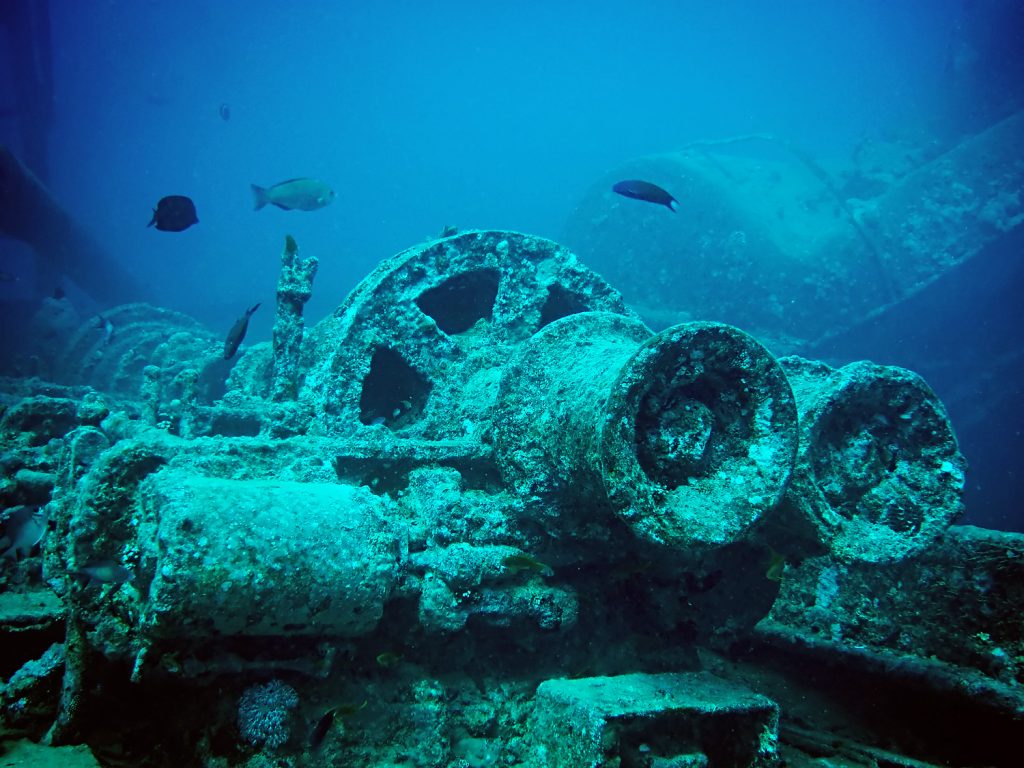
#1 – SS Thistlegorm
For many, the SS Thistlegorm is considered to be the best wreck dive in the world. The SS Thistlegorm is a 128m long transport ship that was owned by the British and sunk during a German bombing raid during the second World War in 1941. It was rediscovered in 1952 by Jacques Yves-Cousteau. It lies in the Strait of Gubal at a depth between 14 to 32 metres. Unsurprisingly, its depth is one of the factors making it such a popular wreck to dive. When dived using nitrox, recreational divers can gain a good amount of bottom time without having to worry about going into mandatory decompression. But what is really the highlight of the SS Thistlegorm is its cargo, as well as its capacity for penetration. The ship houses an array of World War Two era motorbikes, trucks, rifles, locomotives, and tanks, among many other artefacts. It also has a large anti-aircraft gun at the bow. Therefore, to dive the SS Thistlegorm is to be submerged in history: live and tangible. It is better than any museum in replicating the feeling of the immensity of the history behind the artefact.
LOCATION: The wreck is located in the North of the Red Sea. Day boat tours (with early morning starts) visit the SS Thistlegorm from as far away as Sharm El Sheikh and Hurghada (usually taking about 4 hours of transit time). It can be dived either via day boat, by mini/overnight safari (2-3 days) or as part of a northern liveaboard itinerary.
DIFFICULTY: The SS Thistlegorm has an average depth of between 24-26m, with a maximum depth of approximately 32m. It is also best dived with nitrox. On top of this, much of the dive – in order to fully enjoy and get the most out of the wreck – is a penetration dive into the hold of the ship. There is also usually strong current on the descent and ascent portion of the dive. Therefore, it is necessary to be an Advanced Open Water diver with a good amount of experience and good buoyancy control.
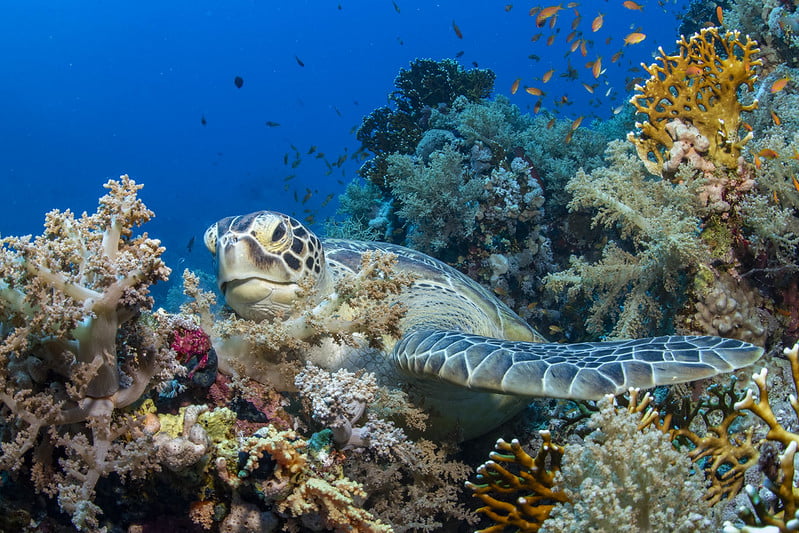
#2 – Ras Mohammed
Ras Muhammed is a national park situated on the southernmost tip of the Sinai Peninsula. Ras Muhammed – as it is a national park – is home to multiple dive sites within it. The best sites at Ras Mohammed are as follows:
- Ras Zatar
- Ras Ghozlani
- Jackfish Alley
- Shark Observatory
- Shark Reef
- Yolanda Reef
- Anemone City
Oceanic white tips, grey tip reef sharks, giant trevallies, barracudas, Napoleon wrasses – these are just a handful of the wide variety of marine life that inhabits Ras Mohammed. This dive site is considered one of the best in the world for a good reason!
LOCATION: Due to its proximity to the southern coast of the Sinai Peninsula, Ras Mohammed can be accessed easily by day boat from Sharm El Sheikh, taking about 1 hour in transit time. However, it is often a better choice to dive it via liveaboard. The reason? With being so close to Sharm El Sheikh, Ras Mohammed can quickly fill up and become a dive site busy with day boats and hundreds of divers. Therefore, by diving from a liveaboard, you can take advantage of early morning/pre-sunrise dives, as well as night dives, in order to dive with maximum serenity and peace. This can make the whole experience a lot less stressful and even more beautiful.
DIFFICULTY: Ras Mohammed is a place where a beginner Open Water diver can enjoy the dive sites with relative ease and comfort.
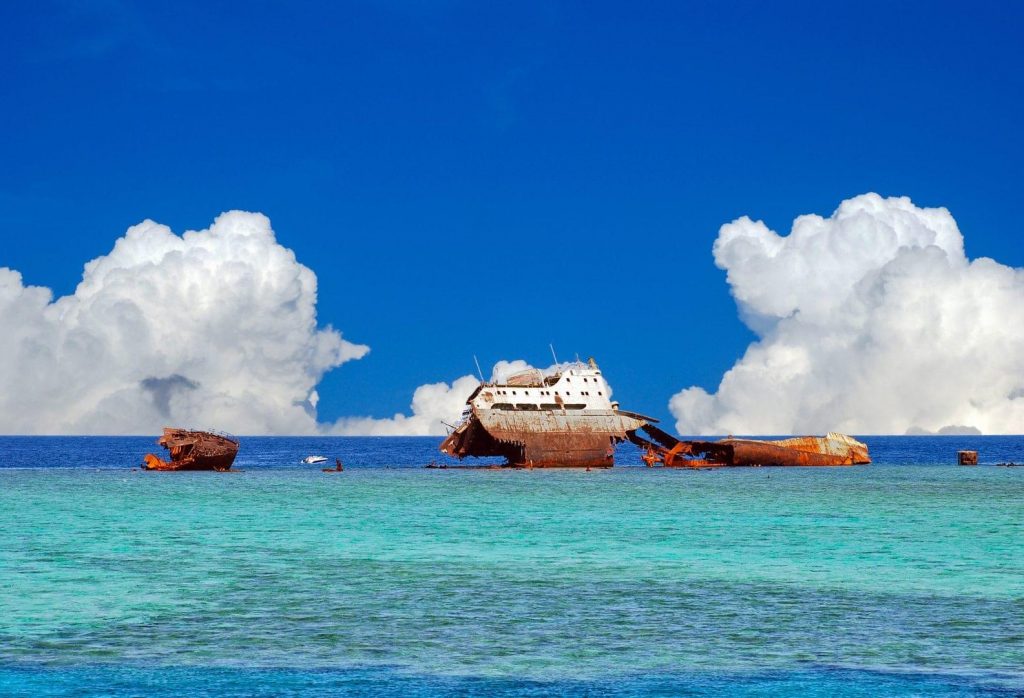
#3 – Straits of Tiran
The Straits of Tiran are located off the southeast coast of the Sinai Peninsula, separating the Red Sea from the Gulf of Aqaba. There are four reef systems in the Strait, named after the cartographers who first mapped the region: Jackson, Woodhouse, Thomas and Gordon Reef. Schooling hammerheads and tiger sharks are present in the Strait, as well as many other large pelagic wildlife. As if this isn’t enough, there are also two wrecks (Loullia and Lara) which ran aground, allowing the site to be recognised from far away.
LOCATION: The Straits of Tiran are close to Sharm El Sheikh, making day boat trips of one and a half hours a common method of access. Again, however, these dive sites can be best enjoyed when accessed via liveaboard (or early morning/overnight trips).
DIFFICULTY: An Advanced Open Water diver certification is recommended.
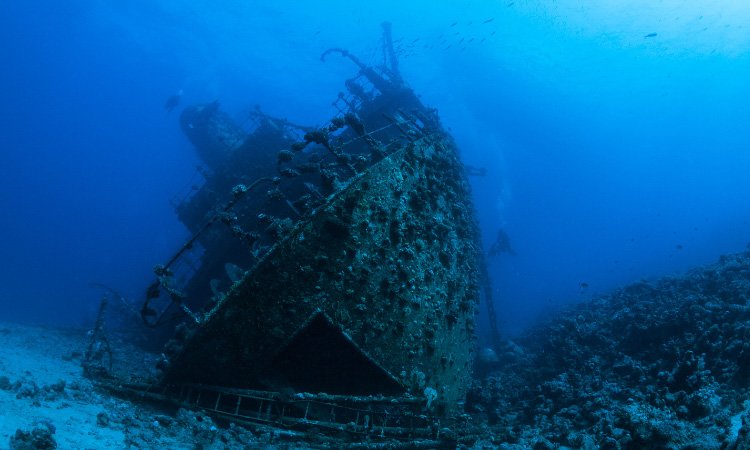
#4 – Abu Nuhas
Abu Nuhas is a wreck diving heaven that is often forgotten about due to being overshadowed by the Thistlegorm. Abu Nuhas is a very shallow reef system that has been the cause of many a sunken ship. Luckily for us, these ships lie in shallow water and can be accessed even by inexperienced beginner divers. There are a total of seven known wrecks, four of which are accessible to recreational divers. These are:
- Chrisoula K.
- Giannis D.
- Carnatic
- Kimon M.
The oldest wreck is the Carnatic, sunk in 1869. The beauty of Abu Nuhas – aside from its majestic wrecks and corals – is the fact it can be dived at all levels; from beginner recreational to advanced technical.
LOCATION: Abu Nuhas is located between Sharm El Sheikh and Hurghada. By day boat it can be accessed in just over two hours from Hurghada and a bit less from El Gouna, and from Sharm El Sheikh it takes just over three hours. Again, however, as with most offshore dive sites in Egypt, it is best enjoyed via a liveaboard/mini-safari trip.
DIFFICULTY: Accessible for divers of all levels of experience and ability.
SOUTHERN SITES
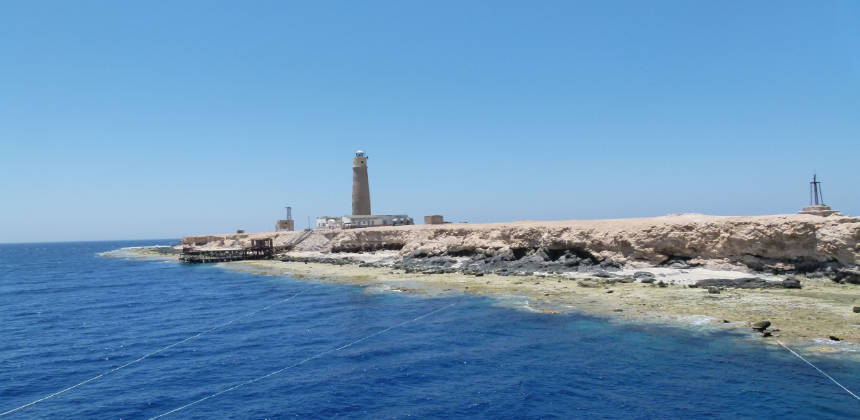
#1 – The Brothers
Any diver worth their salt will at least know of The Brothers. It is rated as one of the best dive sites worldwide. The Brothers, also known as El Ikhwa Islands, refers to two islands in the south of Egypt, off the coast of El Quseir. There is Big Brother and Small Brother. Both islands play host to some of the best wildlife the Red Sea has to offer, from oceanic white tip reef sharks to hammerheads, as well as stunning corals and other large pelagics. The Brothers are also home to two impressive wrecks, one called Numidia and the other Aida.
LOCATION: The site is situated approximately 70km from the coast, and about 200km south of Ras Muhammed in the North. Therefore, it is accessible only by liveaboard. Do not let this put you off, however, as liveaboard trips in the Red Sea offer some of the best itineraries in the world at comparatively affordable prices.
DIFFICULTY: This is a site with sheer drop-offs, large marine life and strong fluke currents. Therefore, it is advisable that you are at least an Advanced Open Water diver, even better one with a good amount of experience. Often, Red Sea liveaboard companies will not take you unless you are an Advanced Open Water diver with 50 logged dives.
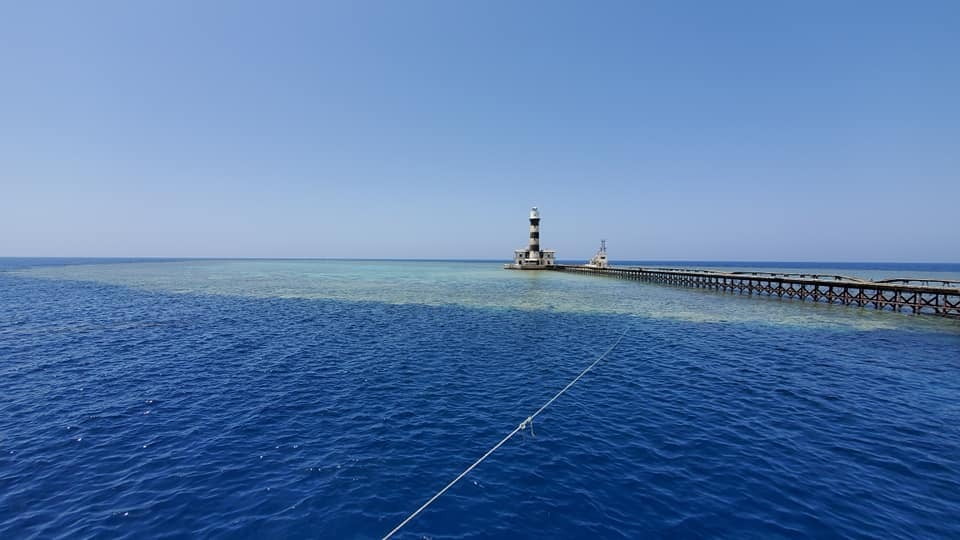
#2 – Daedalus Reef
Daedalus Reef is another top dive site, rated as a must visit for all divers worldwide. Daedalus Reef is a massive reef formation with sheer drop-offs, and is home to a rich diversity of marine life. Oceanic white tip reef sharks, schools of hammerheads, thresher sharks, giant trevallies and many other large pelagics make Daedalus their home. The majority of dives conducted at Daedalus are drift dives, allowing you to take advantage of the current and cover a lot of ground.
LOCATION: Located approximately 180km south of The Brothers, and 80km from the coast of Marsa Alam. Again, this is a dive site accessible only by liveaboard. The Brothers, Daedalus Reef and Elphinstone (to come next!) are usually visited on the same itinerary due to their proximity to one another. Therefore, taking advantage of a liveaboard is an excellent choice to visit these famous sites.
DIFFICULTY: Daedalus Reef is home to strong currents and drop-offs. On top of this, drift diving is the most common method of diving that will be used. Therefore, it is again necessary to have some experience and be at least an Advanced Open Water diver with 50 logged dives.
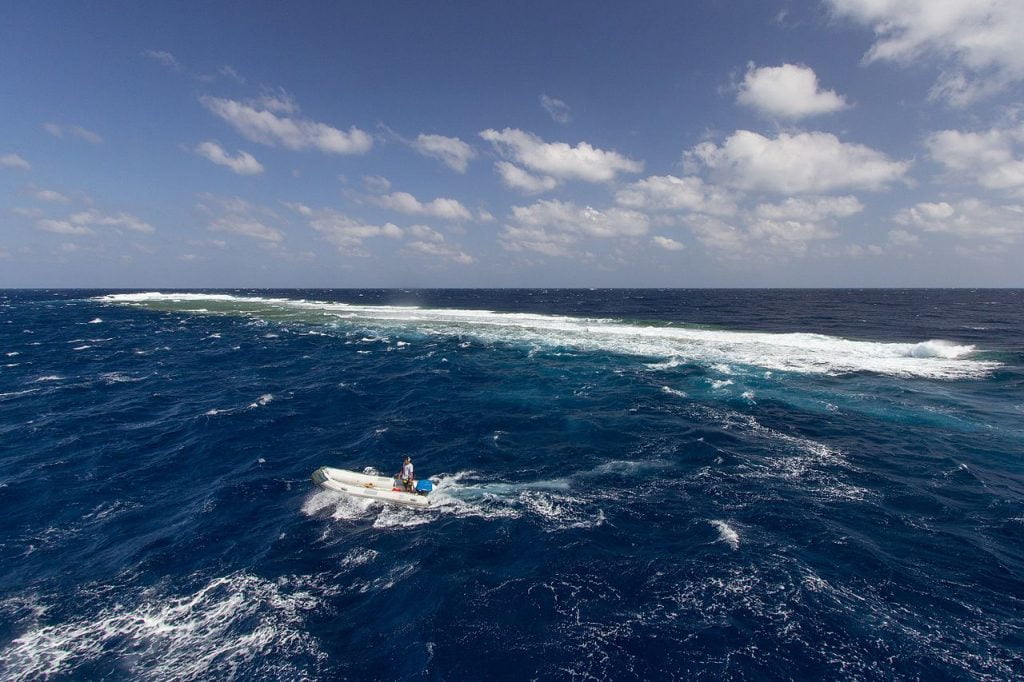
#3 – Elphinstone Reef
Elphinstone, like its southern siblings, is again home to some of the best wildlife and big pelagics that the Red Sea has to offer. Oceanic white tip reef sharks and even tiger sharks are not uncommon at Elphinstone. Aside from its big fish, it is also home to some majestic corals and Gorgonian fields, as well as a multitude of other smaller fish. The reef is always teeming with kaleidoscopic life.
LOCATION: Elphinstone is situated 30km north from Marsa Alam, and about 12km direct from the coast line. Therefore, it can be accessed on day boat trips. However, it is again a better choice to visit it via liveaboard, as you will also be able to visit its sibling sites.
DIFFICULTY: Again, Elphinstone Reef is a site to be visited by experienced, Advanced Open Water divers due to the current and sheer depth surrounding it.
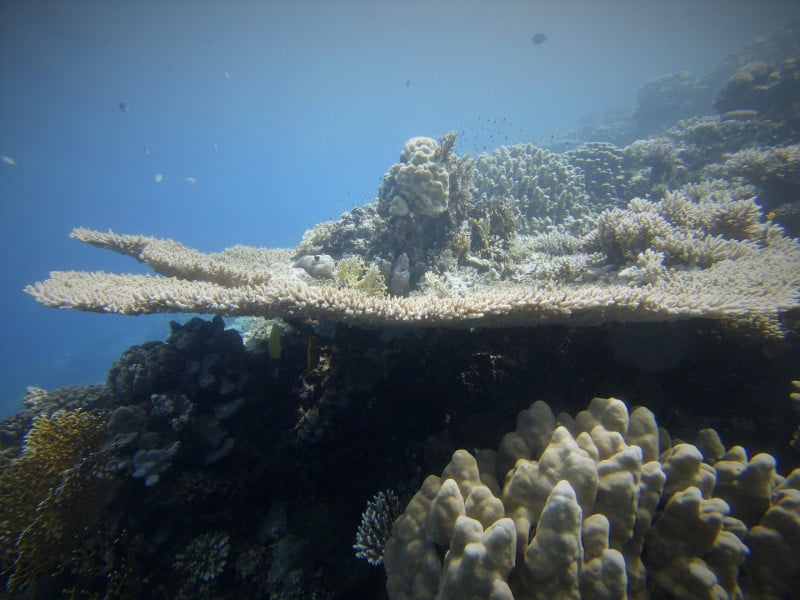
#4 – Panorama Reef & Abu Kafan
Adjacent to Safaga, Panorama Reef and Abu Kafan (two separate but closely situated sites) are home to some of the most stunning drop-offs, gorgonian fields, corals, and even the occasional hammerhead. Abu Kafan translates to ‘father of the deep,’ and with some of the Red Sea’s most panoramic views it is no wonder the site earned this name. Both Panorama Reef and Abu Kafan are perfect for drift dives, with strong currents and hundreds of metres of coral walls.
LOCATION: Close to the coast of Safaga, both of these sites are accessible by day boat. Day boats from as far north as Hurghada are even able to visit!
DIFFICULTY: Despite being closer to the coast, this is still a site with strong current and sheer drop-offs (hence its name). Thus, an Advanced Open Water diver certification with experience is recommended for maximum safety and enjoyment.
‘DEEP SOUTH’ SITES
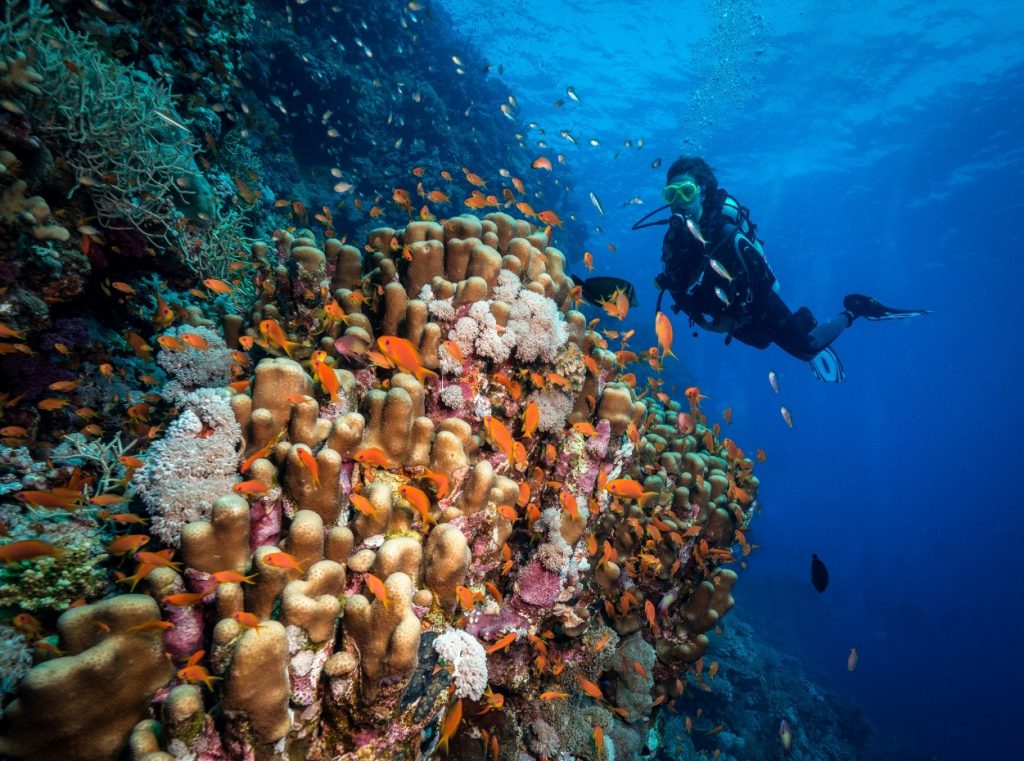
#1 – St. John’s
St. John’s is a reef system in the deep south of the Red Sea, boasting an abundance of undisturbed marine life. It is home to many schools of fish, hammerheads, and tunnel systems. Like all deep-south dive sites in the Red Sea, they are comparatively empty of divers and boats, making for serene dives with the whole reef system to yourself.
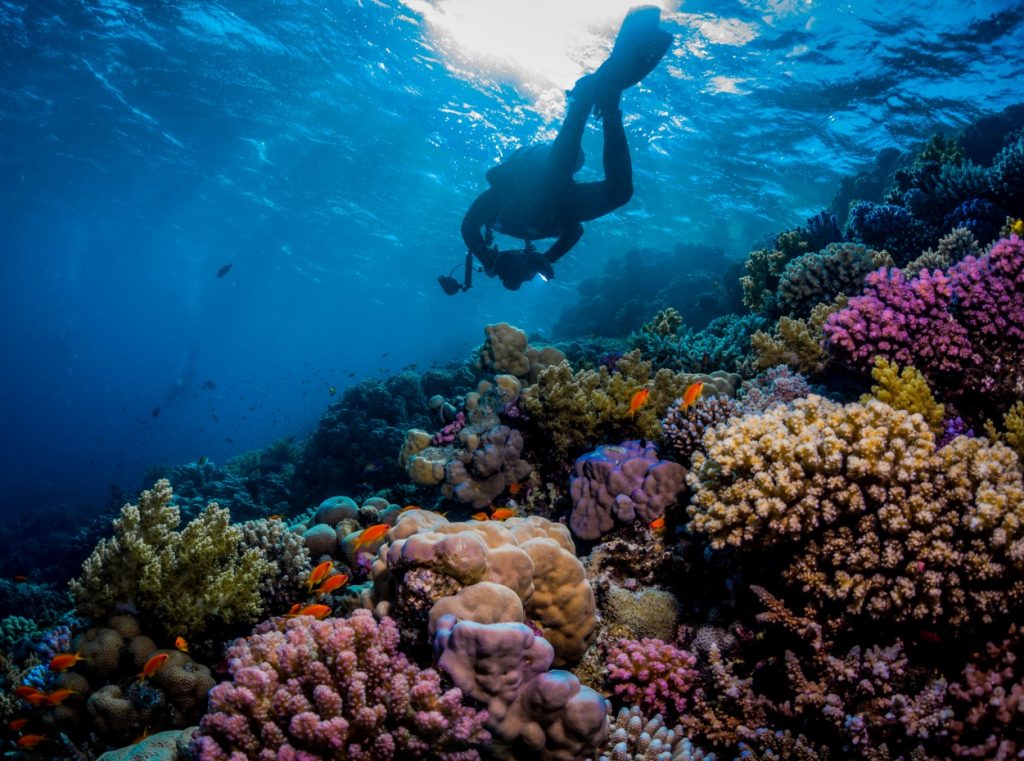
#2 – Fury Shoals
Fury Shoals, like St. John’s, is a system of many reefs that make up the Southwest coastline of the Red Sea. Therefore, there are many dive sites within Fury Shoals, allowing for different types of dives. Drop-offs, swim-throughs, pristine corals, wrecks, lagoons, dolphins – these are just a handful of the things Fury Shoals has to offer. The sites can also be reached by day boats running from Marsa Alam, but are of course better to experience via a liveaboard.
TECHNICAL DIVE SITES
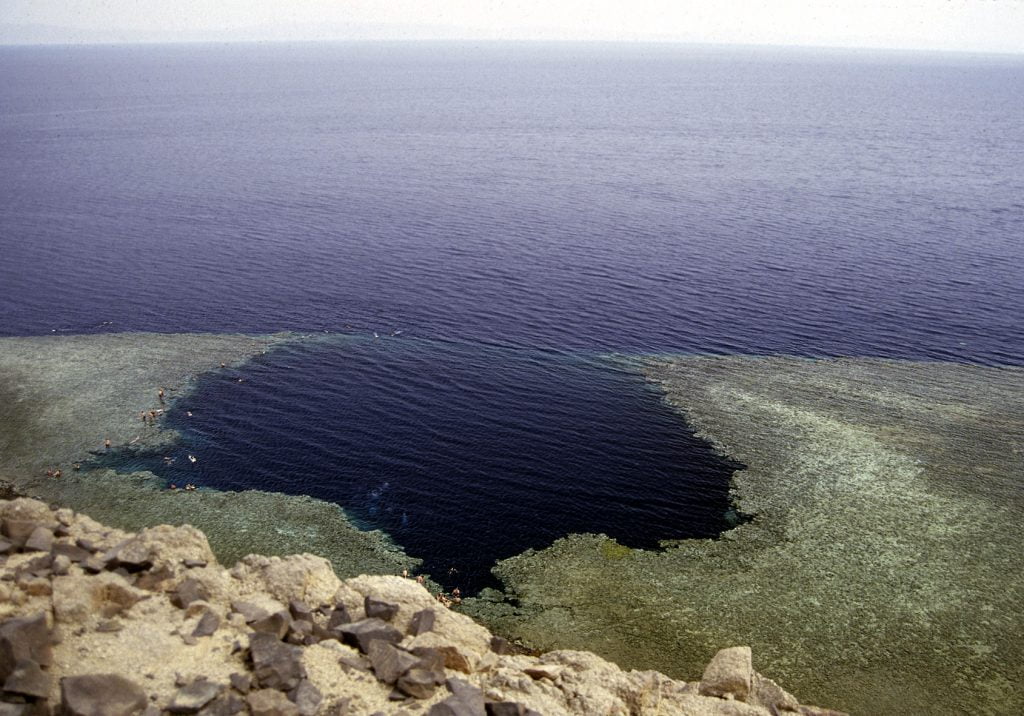
#1 – Blue Hole
A world famous dive site, the Blue Hole of Dahab is a must for all technical divers. Despite its solemn nickname (‘the Divers Graveyard’) it is in fact a very safe dive site. The Blue Hole is simply a straight drop down, like an elevator, to 100 metres. There is no current, visibility is usually fantastic, and overall it is a very controlled environment. Although you can of course dive the Blue Hole as a recreational diver, staying above 40 metres and avoiding mandatory decompression, to get the proper experience it makes far more sense to dive it as a technical dive.
DEPTH: The Blue Hole itself goes down to 100 metres. From there, if you swim through the Arch, the exterior wall slopes down to approximately 130 metres. That said, a popular technical dive in the Blue Hole is to swim through the Arch at around 55-60 metres.
LOCATION: The Blue Hole is situated in Dahab, a town popular for diving in the north of Egypt, about one hour north from Sharm El Sheikh.
LEVEL: Extended Range/Normoxic Trimix divers and higher will best enjoy the Blue Hole.
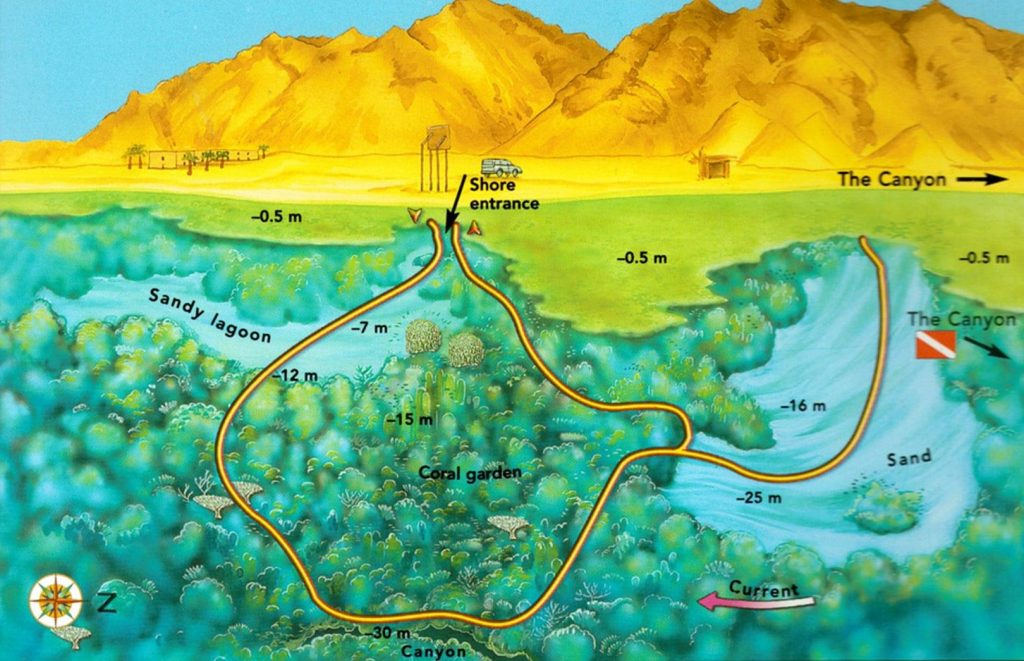
#2 – Abu Helal Canyon System
The Abu Helal canyon system is another great dive site to be enjoyed by technical divers in Dahab. The canyon stretches for hundreds of metres, and can be extended into a one way dive to Abu Tahla when done with a bottom stage. The canyon system has many twists and turns, and is cinematic in the majesty of its views. This is a truly magical, lesser visited dive site.
DEPTH: The Abu Helal canyon system stays at a depth between 40 to 55 metres.
LOCATION: Situated in Dahab, just south of the Blue Hole.
LEVEL: Extended Range/Advanced Recreational Trimix divers and higher will best enjoy this dive site.
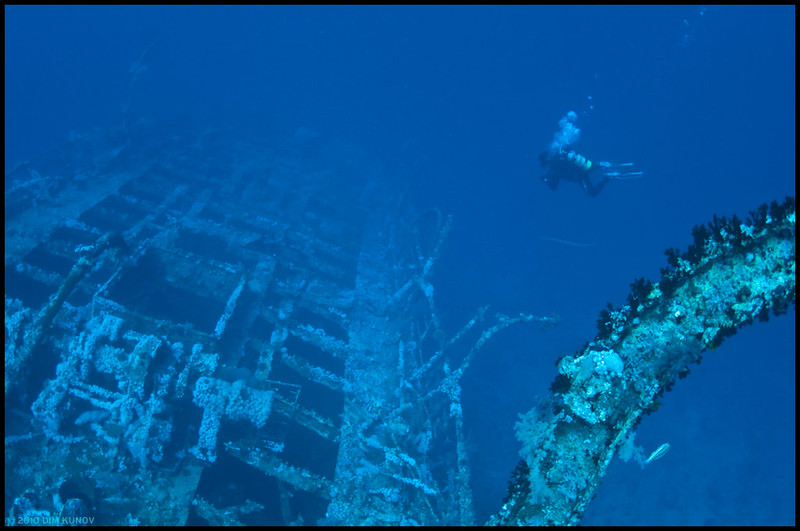
#3 – Numidia
The Numidia lies on the north side of the Big Brother Island at The Brothers. It sank in 1901, carrying a vast array of cargo weighing up to 7000 tons. Its sheer size makes it a majestic sight to see under the water.
DEPTH: The wreck can in fact be enjoyed by recreational divers too, as it begins at a depth of 10 metres. However, it goes all the way down to 85 metres. Therefore, to be enjoyed best, a technical dive is the best option.
LOCATION: The Brothers.
LEVEL: Numidia can be enjoyed by entry level technical divers and higher. However, to enjoy the wreck to its fullest, hypoxic level trimix is necessary.
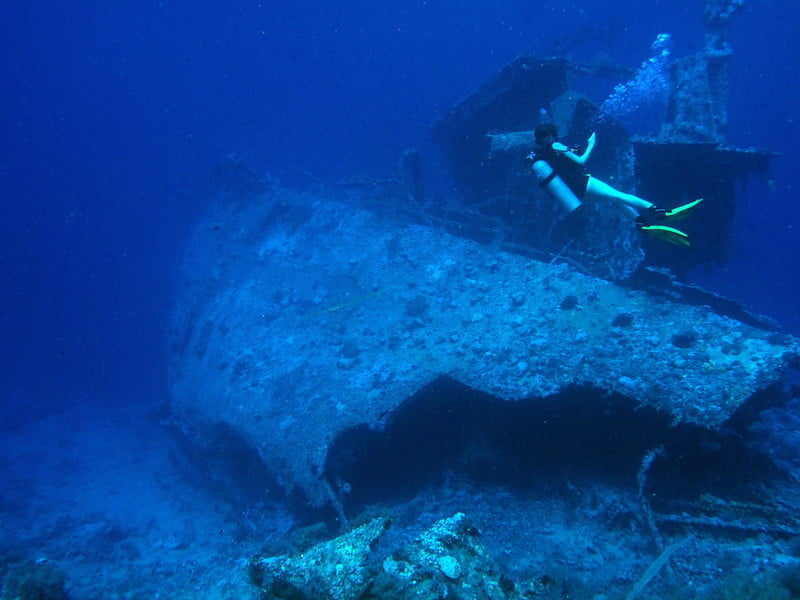
#4 – Aida
In 1957 the Aida II sank on Big Brother Island at the Brothers. Since then, it has become festooned in corals and life. Though smaller than its sibling wreck Numidia, Aida is a beautiful wreck that also allows for penetration.
DEPTH: Aida lies between 25 to 65 metres.
LOCATION: The Brothers.
LEVEL: Aida can be dived as a recreational dive starting at around 35 metres (depth of the engine room and hold) but is of course much better dived technically. Diver’s can enjoy Aida at the basic technical level, but will be able to get the full wreck experience by being a qualified Normoxic Trimix diver.
#5 – Gulf Fleet
The Gulf Fleet is one of the deepest wrecks in the Red Sea. It lies between 85 to 108 metres, making it a dive for the creme de la creme of technical divers. It is home to many corals and life. On the ascent, divers also have the option to visit a neighboring wreck – Colona VI – lying at approximately 65 metres.
DEPTH: 85 to 108 metres.
LOCATION: Shaab Ruhr Umm Gamar, Hurghada.
LEVEL: Hypoxic Trimix certification is necessary in order to be able to dive the Gulf Fleet.
#6 – *Thistlegorm*
Although the SS Thistlegorm is often done as a recreational dive, it makes for an even better technical dive. As the wreck is still relatively shallow (14 to 32 metres deep), you can make an extended bottom time with minimal deco, allowing you to fully take your time to enjoy the wreck in bliss.
#7 – *Abu Nuhas*
Again, although Abu Nuhas makes for a perfect recreational dive (for divers of all levels) it can also be enjoyed as one long dive by a technical diver, allowing them to travel from one wreck to the next without having to surface. This is best done with the use of a DPV and bottom stage.